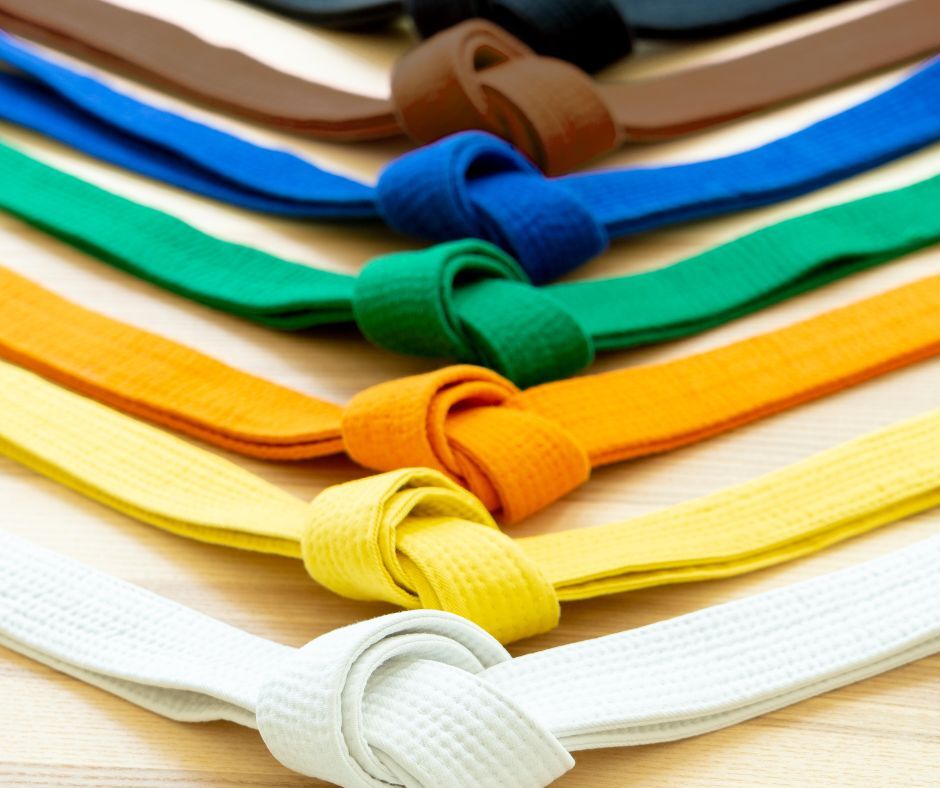Have you ever wondered about all those different colored belts in a Karate class?
The visual cue about a student’s progress is handy. Plus, it provides a source of pride and a sense of accomplishment for Karate students as they move through the ranks and are awarded new colors.
But where did the idea of colored Karate belt levels come from? What is the correct Karate belt order and what is the meaning behind them all? Let’s find out!
As the lowest belt in Karate, the white belt is where everyone starts. The largest cohort of students have worn this belt and many people never make it past this point.
The highest belt in Karate, and thus the most coveted, is the black belt. Only about 3-5% of people who started training in Karate will complete their journey to earning a black belt.
Earning a black belt in Karate is a prestigious honor. It takes years to earn your black belt. Most people don’t realize the hours of sweat, tears, and even a little blood that go into earning this prize.
But when you receive your black belt…you’ll know. And the end of pride and accomplishment is profound.
Of course, you’ll also know that you’ve only just begun. Earning a black belt isn’t the end of the road in Karate, it is the beginning of a lifelong journey.
The notion of the same white belt turning to black as a symbol of a student’s progress is mythical. However, the idea of the colors progressing from lighter to darker was done for a practical reason.
The coloured belt levels in Karate came into more widespread use during and after World War II. At that time, life was hard and money was scarce. Instead of awarding students a new belt for each rank, the same belt was dyed a darker colour to conserve resources.

